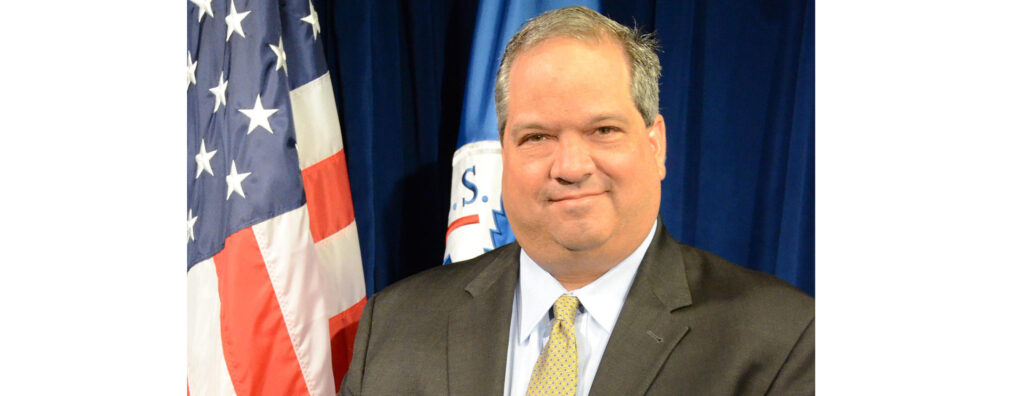
For most people, catastrophic thinking is something they want to avoid. For Eric Letvin ’92, G’94, preparation for disasters has defined his professional career. Letvin is the Deputy Assistant Administrator for Mitigation the Federal Emergency Management Agency (FEMA) and directs FEMA’s pre- and post-disaster mitigation programs that support local level projects intended to avoid or reduce the loss of life and property.
At Syracuse University, Letvin completed both his Bachelor’s and Master’s degrees in environmental engineering while working under the guidance of Civil and Environmental Engineering Professors Charles Driscoll and Chris Johnson. After graduation, he initially worked for engineering consulting firms that dealt with hazard mitigation and risk management.
“I’ve been working in hazard mitigation since my early career, going out after national disasters and seeing how buildings performed,” said Letvin. “How to approach recommendations for rebuilding, what changes could be made to codes and standards to reduce the vulnerabilities to future natural hazards.”
Letvin made the move to public service and was named the Disaster and Failure Studies Program Director within the National Institute of Standards and Technology’s (NIST) Engineering Laboratory under the Department of Commerce. NIST teams assess building and infrastructure performance during natural disasters and evaluate steps that could be taken to improve future construction.
“We conducted an extensive investigation of the Joplin tornados, making recommendations to codes and standards.”
After NIST, Letvin was the Director of Hazard Mitigation and Risk Reduction Policy for the National Security Council. In his role, Letvin coordinated disaster preparation efforts and advised the President and members of Congress on projects designed to protect crucial infrastructure during a disaster.
“We did a lot of work supporting the rebuilding after Superstorm Sandy and I helped write executive orders aimed at increasing resiliency to floods, wildfires and earthquakes,” said Letvin.
After studying the impact of Tropical Storm Allison on Southeast Texas in 2001, Letvin’s office supported mitigation grants which improved flood walls and structural improvements to the Texas Medical Center.
“When Hurricane Harvey hit, that medical complex was operational. The hospitals remained operational during Harvey due to the well-designed flood protection measures.” said Letvin.
Letvin joined FEMA in 2016, overseeing Hazard Mitigation Grant Program, the Pre-Disaster Mitigation Grant Program, the Flood Mitigation Assistance grants, the Floodplain Management component of the National Flood Insurance Program.
Over 22,000 communities across the U.S. participate in the National Flood Insurance Program and they are all responsible for enforcing the minimum standards for building in floodplains.
“Our dollars help promote hazard risk reduction,” said Letvin. “We want to lessen the impacts of future disasters so look at projects and determine if they are effective and feasible. We are always thinking about the next event.”
As part of FEMA’s response to COVID-19, Letvin was asked to think about the future and how different government agencies could coordinate the response mission in a pandemic environment.
“How would we conduct s response in a COVID environment?” said Letvin. “It’s a completely different environment, we exercise for it, we plan for it.”
Letvin believes that COVID-19, like many other challenges facing our society, will require bringing people together with different areas of expertise.
“If we make progress, engineers will play a crucial role but we need to work with the scientists,” said Letvin. “How do we protect the critical infrastructure in our country? We need to work with health care professionals to understand how it operates.”
He sees the interdisciplinary approach at Syracuse University as a strong foundation for his career. Being on a campus with renowned policy, engineering, computer science, management, public health and communications programs reflects the collaborations needed every day in the real world.
“You work with colleagues to solve a larger problem, the critical thinking – that is very applicable after graduation,” said Letvin.
